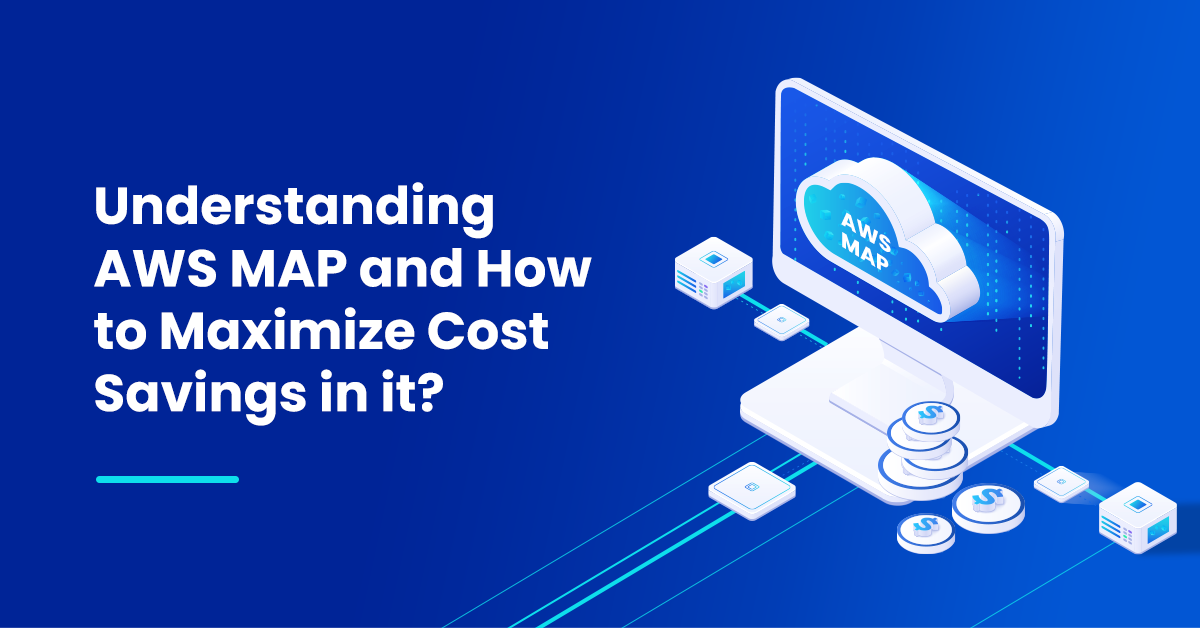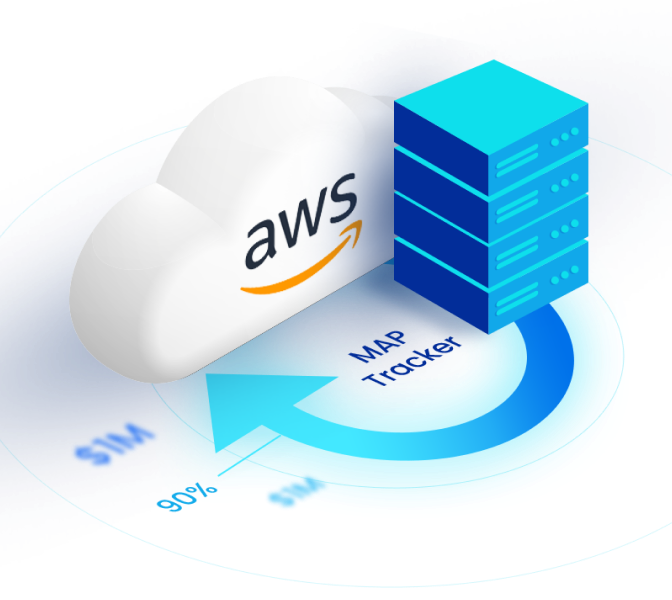Customers have numerous motivations for migrating and modernizing their operations in the cloud. In addition to reducing operational expenses, they can accelerate their pace of innovation, enhance customer experiences, foster new business models, and accomplish digital transformation or modernization objectives.
According to a recent study, migrating on-premises infrastructure to AWS can provide quantifiable business values such as:
- 9% decrease in unplanned downtime
- 20% cost savings in technology infrastructure
- 29% increase in staff focus on innovation
But before you decide to move to AWS, the fundamental question you should ask yourself is if you’re ready to migrate to the cloud. Keeping in mind that the migration process is an iterative one. There must be a complete understanding of the following:
- What are the business benefits to be realized?
- How are we going to manage costs during the migration?
This is why AWS created AWS Migration Acceleration Program (MAP).
What is AWS MAP?
Migration Acceleration Program (MAP) is to help AWS customers accelerate their migration to AWS from on-premises workloads to AWS. To identify the migrated workloads and track their spending on AWS, a tagging mechanism is employed. This tagging mechanism allows you to effectively display the spend associated with the migrated workloads. AWS then calculates financial credits based on this spend and applies those credits to your overall AWS bill to support your cost of migration.
Therefore, the more workloads you migrate, the more incentives you receive from AWS and the cheaper it gets to run your IT on AWS while you’re migrating.
How Does AWS MAP Help With Migration?
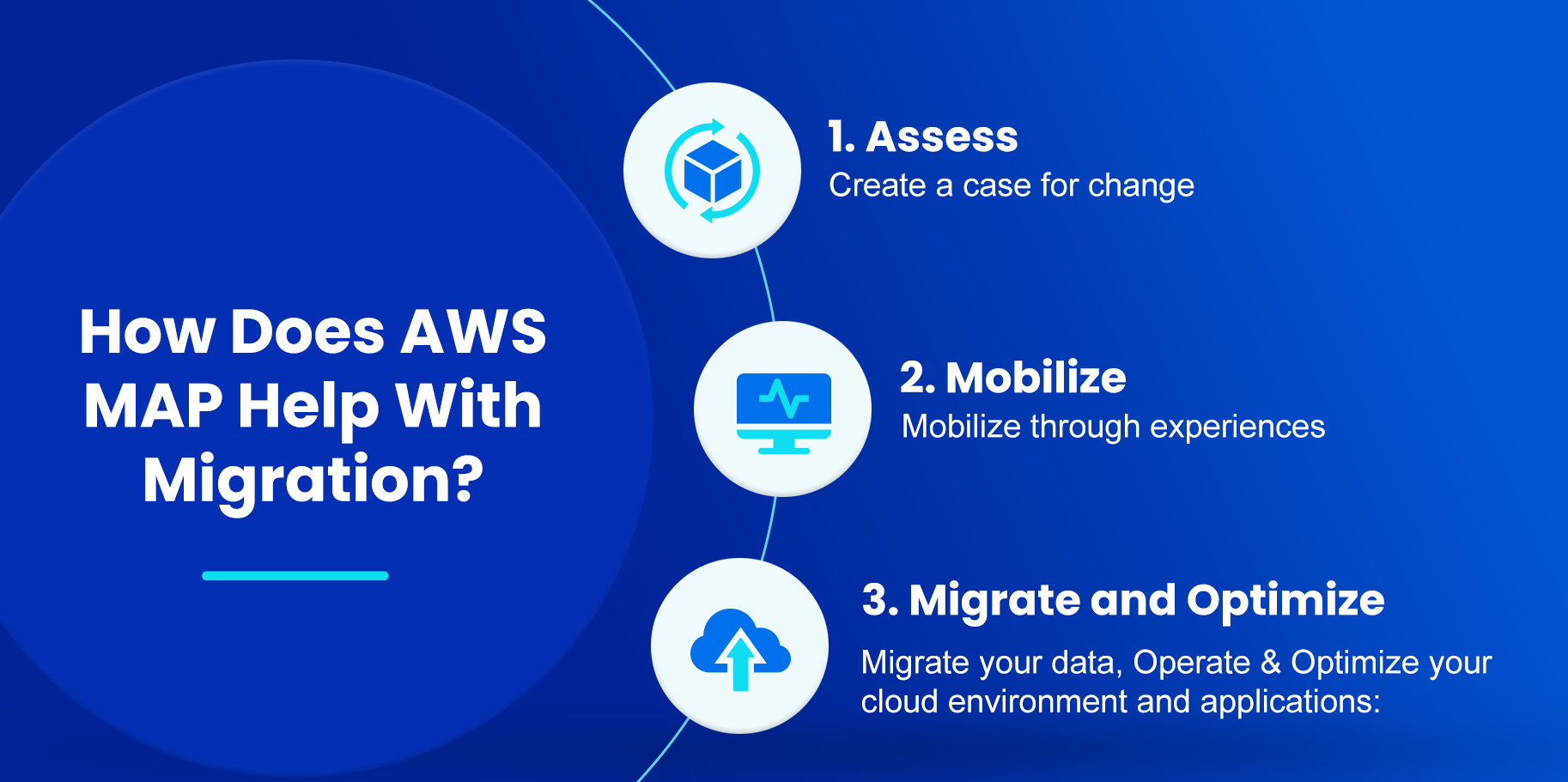
Migration projects can be long, complicated, and expensive, but AWS MAP aims to alleviate some of those challenges by providing organizations with a simple three-step guided approach:
- Assess – Create a case for change: The initial stage involves customers undergoing a migration assessment, which aids in evaluating the organization’s current readiness for cloud operations. A crucial aspect of this assessment is identifying the migration goals and desired business outcomes. This step facilitates the discovery of on-premises resources and offers a projection of the total cost of ownership (TCO) for AWS.
- Mobilize – Mobilize through experiences: During this phase, the emphasis is on resolving identified gaps in your organization’s readiness, which were revealed in the assessment phase. The key areas of focus include establishing your foundational environment, enhancing operational readiness, fostering cloud skills development, formulating a robust migration plan, and refining your business case.
- Migrate and Optimize – Migrate your data, Operate & Optimize your cloud environment and applications: Here, the attention transitions towards designing, migrating, and validating each application based on one of the seven common migration strategies. As the applications are migrated, the focus shifts towards optimizing the new infrastructure, turning off old systems, and continuously iterating towards a modern operating model.
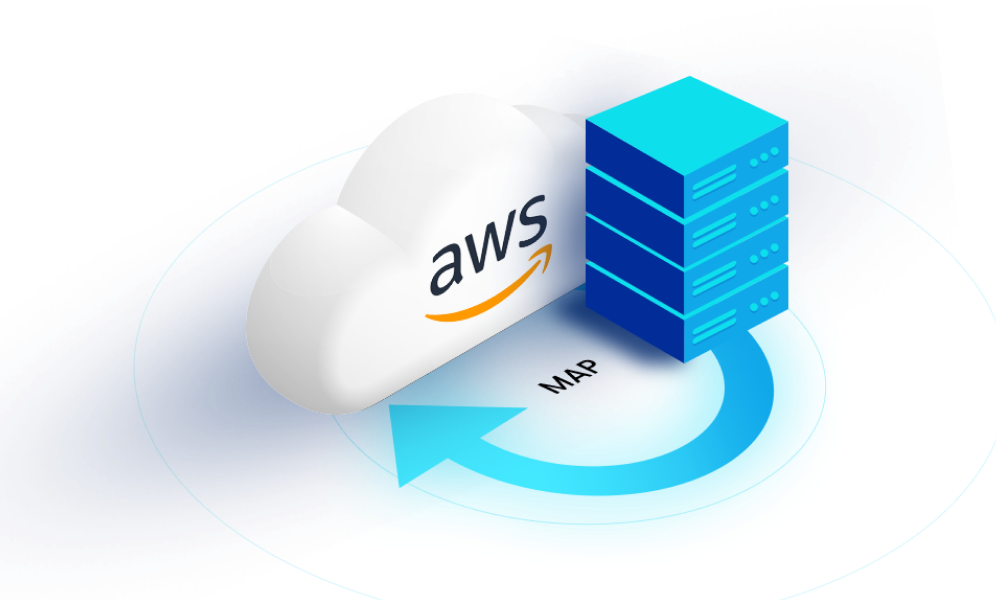
How to Achieve Maximum Financial Benefits From the MAP Program?
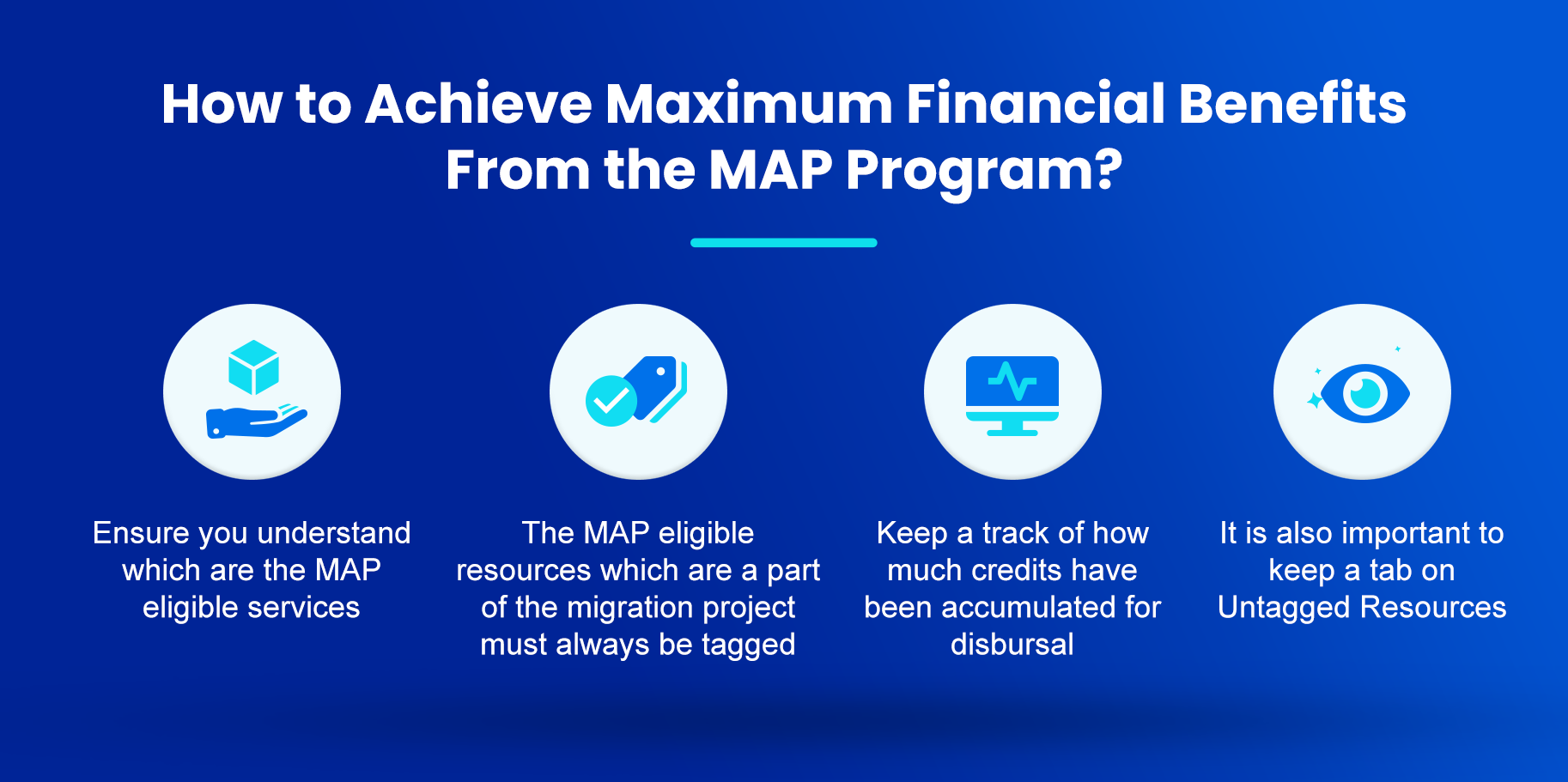
The AWS MAP program is a cost-effective solution for organizations to migrate mission-critical workloads to AWS swiftly. By collaborating with AWS, your organization can achieve rapid migration, leading to a quicker return on investment and time-to-value.
However, it is crucial to keep in mind that AWS has some ground rules on how it calculates those financial benefits. It is neither a one-time disbursement nor an automatic monthly percentage of your total cloud bill.
To make sure you receive the most of the financial benefits:
- Ensure you understand which are the MAP-eligible services and which are not before signing a MAP project. Not all the services are eligible for getting the MAP financial credits.
- The MAP-eligible resources which are a part of the migration project must always be tagged as per the AWS set tagging nomenclature. Without tagging, AWS will not consider them as map-migrated resources.
It is a prevalent mistake for the engineers not to tag these workloads because they usually are never a part of the business talks while signing the agreement. Hence, it’s essential for FinOps professionals to step in and work synchronously with the engineers. - Keep track of how many credits have been accumulated for disbursal. The credits are disbursed quarterly, and one can easily lose track of the calculations.
Companies often have to spend additional time and money getting cadence on the above pointers, but with nOps your “visibility problem” is resolved.
- Centralized view to track all of your migration components
- Automatically track your map-migrated resource spend, estimated MAP incentives earned, and Actual Credits Disbursed each quarter.
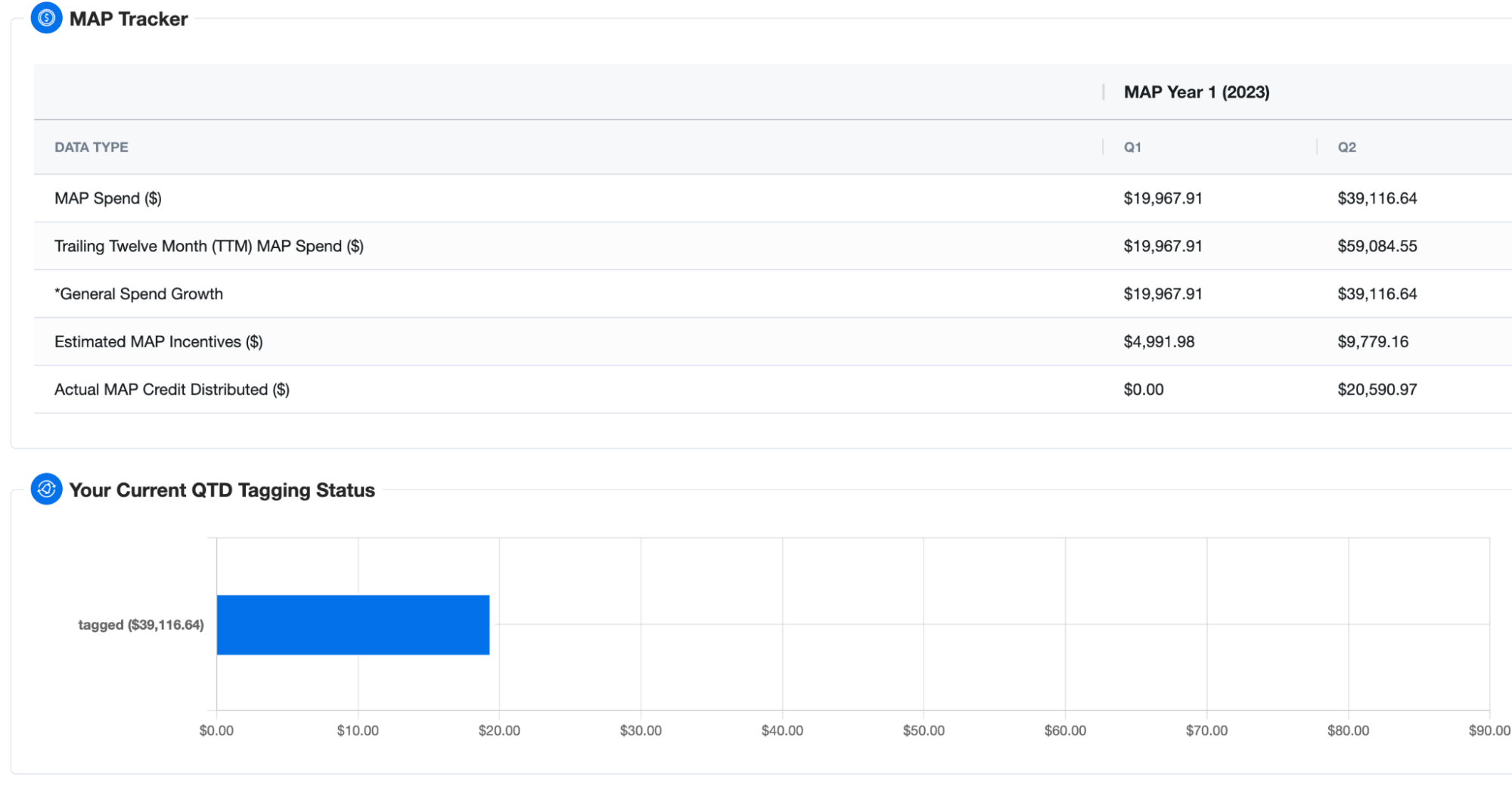
nOps is absolutely free to use, and it is very easy to configure your AWS environment and MAP project in the tool.
This proactive approach empowers you to optimize costs and ensure that you achieve the highest possible financial benefits from your migration.
nOps helps you operationalize and put your cloud savings on auto-pilot, allowing your engineering teams to focus on innovation and building capabilities that deliver value.
Let us help you save! Sign up for nOps today.


